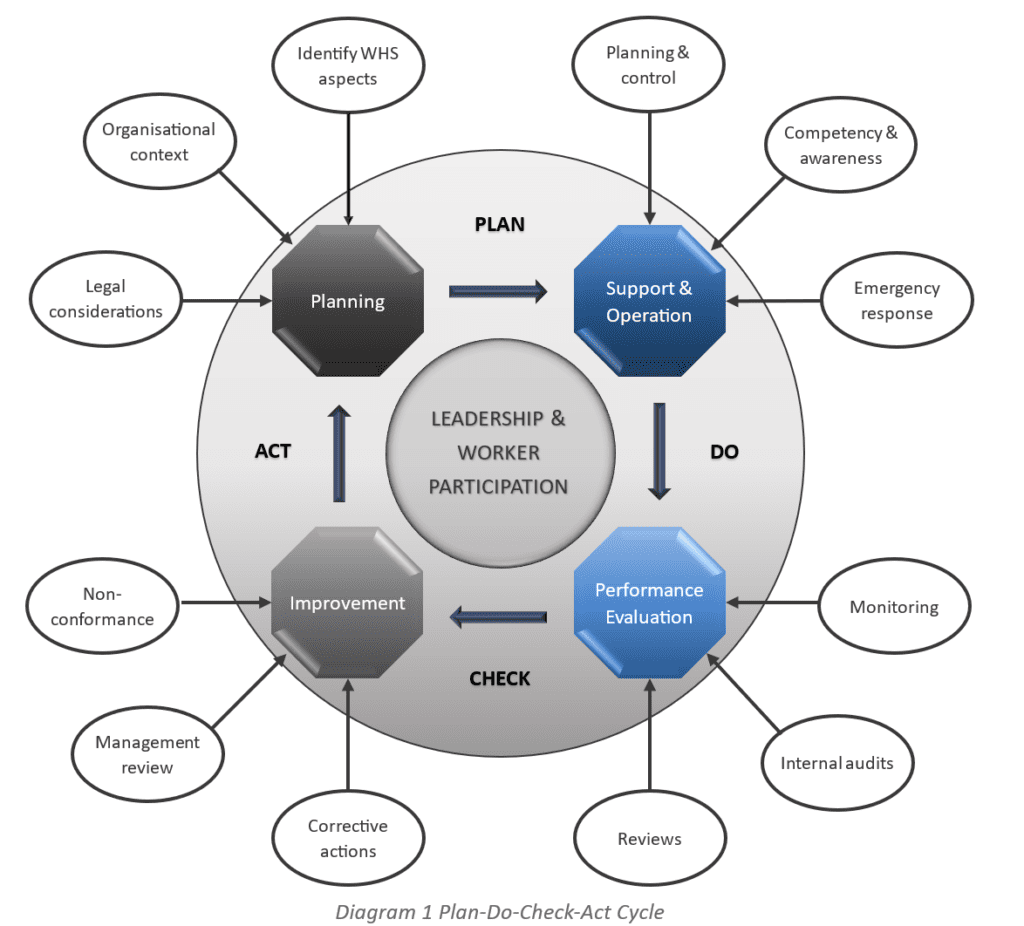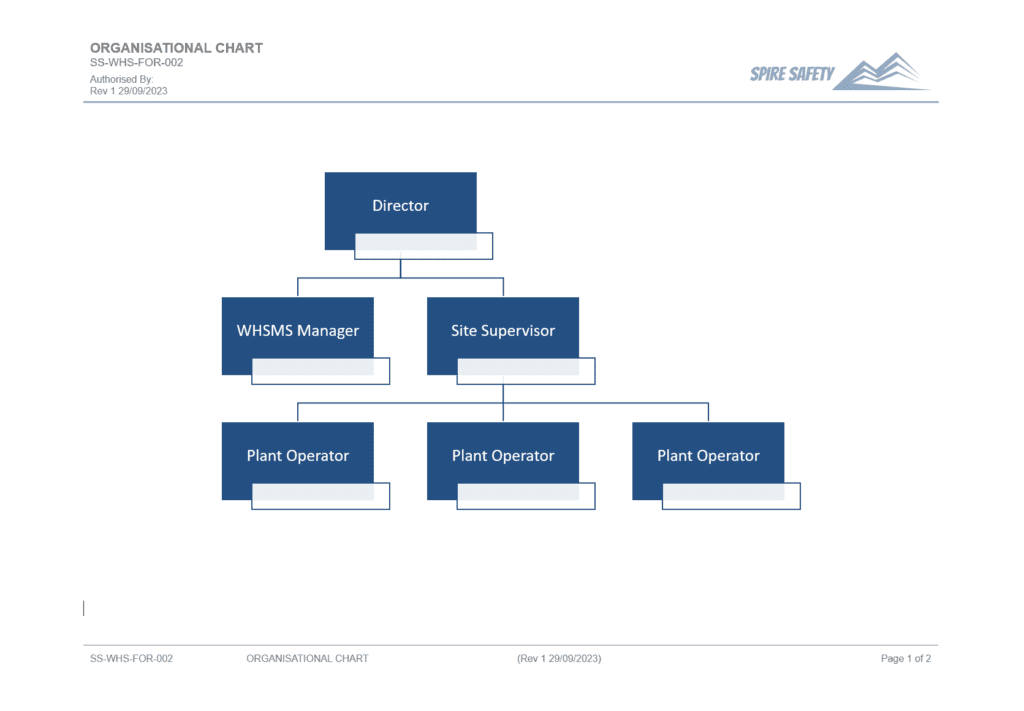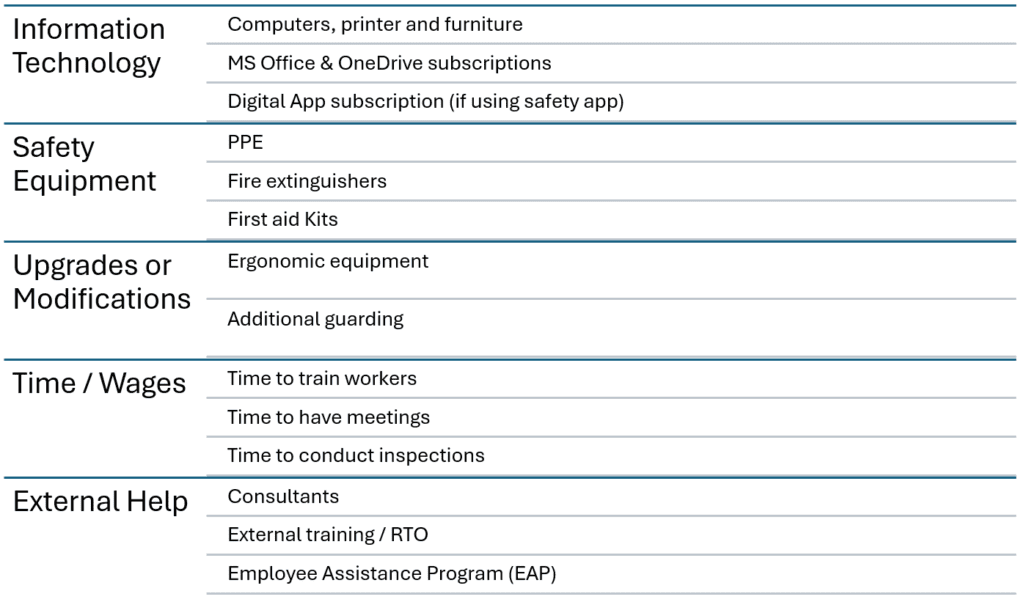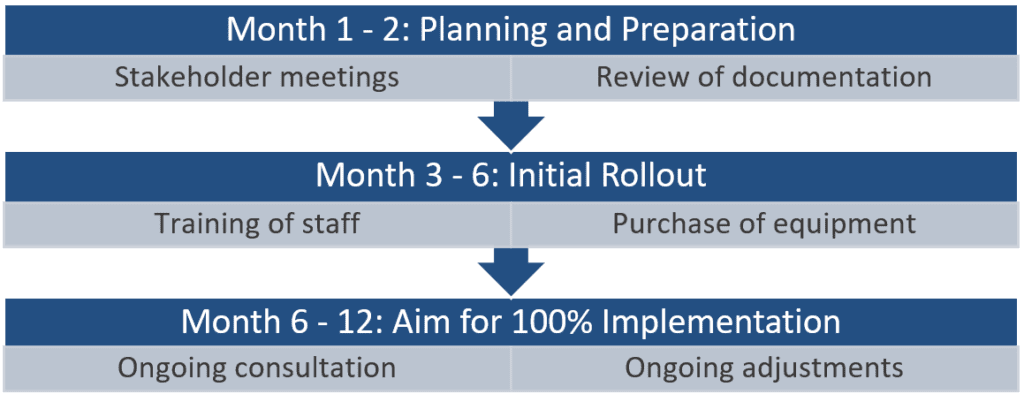WHSMS Implementation Plan: Basics for Beginners

A Workplace Health and Safety Management System WHSMS Implementation Plan is a document that outlines the steps and timeline for implementing a WHS Management System in an organization. A WHSMS Implementation Plan should be specific for the organisation, but may include:
- Setting goals and objectives
- Deciding on roles and responsibilities
- Ensuring adequate resources are available
- Establishing a timeline
- Training for staff
Step 1: Setting Goals and Objectives
They don’t have to be documented, but you should have some goals and objectives agreed upon. For example:
- Finishing the WHSMS Implementation within 12 months,
- Complete all training within 6 months, and
- Engage with 100% of workers during the implementation period.
Download our WHSMS Implementation Plan Schedule to help guide your WHSMS rollout!
Step 2: Deciding on Roles and Responsibilities
Assigning Workplace Health and Safety (WHS) roles and responsibilities is an important aspect of ensuring that an organization’s WHS Management System (WHSMS) is effective. Here are some steps to follow:
- Define the key personnel (e.g. Site Supervisor, or Operator)
- Assign the roles and responsibilities
- Communicate the roles and responsibilities (e.g. via position descriptions)
An organisational chart can be helpful.

Step 3: Ensuring Adequate Resources are Available
Identify the resources required for the WHSMS Implementation Plan. These may include:
 It may be necessary to make a budget and be sure to keep all those receipts!
It may be necessary to make a budget and be sure to keep all those receipts!
It’s important to ensure that top management is committed to providing the necessary resources to support the WHSMS Implementation Plan. This can be achieved through regular communication and reporting on the WHSMS’s progress and effectiveness.
Step 4: Establishing a Timeline
The size and complexity of the organization can have a significant impact on the timeline. Larger organizations may require more time due to the number of employees and the range of activities.
The existence of pre-existing WHS systems and processes can also impact the timeline. Organizations with well-established systems may be able to implement the WHSMS more quickly.
Step 5: Training for Staff
The WHSMS Implementation should outline the training required for staff. This is essential to ensure that all staff understand the WHSMS and their roles and responsibilities. Training that may be required:
- Familiarisation with the WHS Management System
- WHS inductions
- Registered Training Company (RTO) courses (e.g. perform first aid)
- Plant or equipment licenses
- Verifications of Competency
- Emergency response training
Training for staff will likely be ongoing, with periodic refresher training conducted as necessary.
FAQs
What are the benefits of a WHSMS Implementation Plan?
By planning and having a structured approach to the WHSMS implementation, the organisation is more likely to reap the rewards of having a well-implemented WHSMS.
How long does it take to implement a WHSMS?
Implementation of a full WHSMS may take anywhere from 3 months to over 2 years.
What resources are required for effective WHSMS implementation?
Resources required for WHSMS implementation may include:
- IT expenses
- Safety equipment
- Upgrades or modifications
- Time / wages
- External help (e.g. consultants)
What challenges might be encountered when implementing a WHSMS?
Barriers to WHSMS implementation can be:
- Resource constraints
- Staff turnover
- Lack of leader commitment
- Organisational or cultural issues
Did You Know?
In ancient Rome, the risk of a scribe getting a cramp from writing all day was taken so seriously that they had designated “arm-flappers”? These were fellow workers whose sole job was to stand behind the scribes and periodically grab their arms, swinging them vigorously to keep the blood flowing! If you thought your company’s yoga break was a modern invention for workplace health, think again. The Romans were ahead of their time, proving that even in ancient workplaces, safety (and keeping those writing arms limber) was no laughing matter—or maybe it was, just a little.
Further Reading
What is ISO 45001 Certification and How Do I Get Certified? (Spire Safety) <https://spiresafety.com.au/resources/iso-45001-certification/>
What are the WHS Penalties for Non-Compliance? (Spire Safety) <https://spiresafety.com.au/resources/whs-penalties-for-non-compliance/>
Work Related Deaths Per Year in Australia: Facts and Figures (Spire Safety) <https://spiresafety.com.au/resources/work-related-deaths-per-year/>
Workplace health and safety management system (Comcare) <https://www.comcare.gov.au/safe-healthy-work/healthy-workplace/whs-system>
